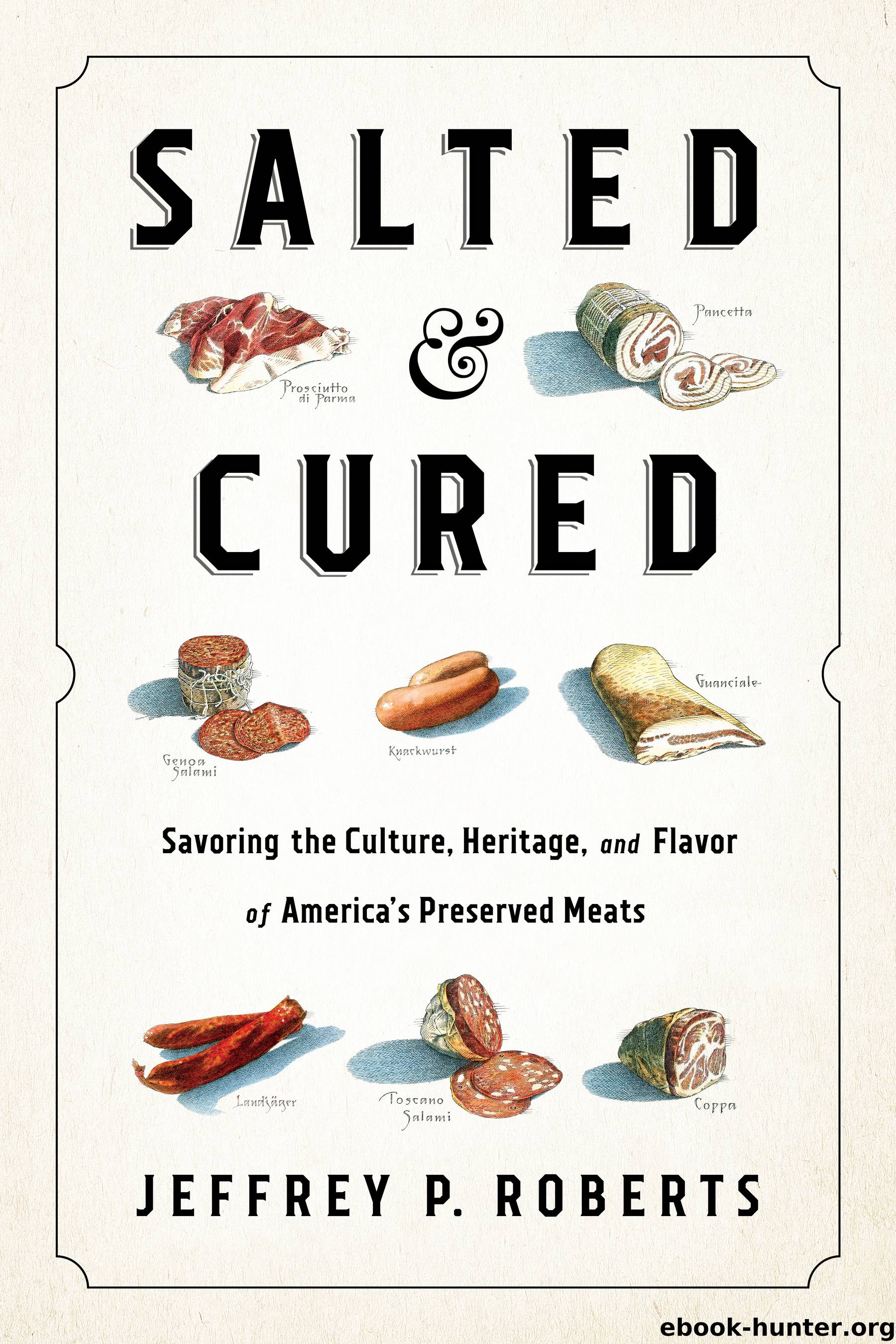Salted and Cured by Jeffrey Roberts

Author:Jeffrey Roberts
Language: ara, eng, eng
Format: epub
Publisher: Chelsea Green Publishing
Published: 2017-03-21T20:49:07+00:00
CHAPTER TEN
Pennsylvania
He hath an excellent stomach.
—William Shakespeare, Much Ado About Nothing
In 1968 I moved to Philadelphia to attend graduate school at Temple University, thinking I had failed my physical for the draft—that turned out to be wrong. I have vague memories of that fall; the most important ones relate to taking a leave of absence from school when I joined the US Navy instead of being drafted into the Army or Marine Corps. After serving as a meteorologist, I returned to Philadelphia in early 1973 to complete grad school and stayed in Philadelphia until 1995.
Those twenty-two years encompassed graduate studies in the history of cities; tenure as a curator and historian at the Atwater Kent Museum, devoted to the history of Philadelphia; service at the University of Pennsylvania’s Morris Arboretum; and then being associate dean at Penn’s School of Veterinary Medicine. Looking back, they were unique opportunities to learn, teach, and continue to inform my perspective on food, agriculture, and dried cured meat.
Regardless of where I lived in the city, on most Saturday mornings I left the house to arrive at the Reading Terminal Market just as its doors opened at 8:00. The market was underneath the Reading Terminal, the last nineteenth-century railroad station in downtown Philadelphia. Trains entered from the north along an elevated viaduct and ended their journey at Twelfth and Market Streets, sitting above the Terminal Market. For many years families along the Reading routes north of the city could place a basket containing a shopping list onboard a Philadelphia-bound train. Once at the station, porters picked them up, purchased whatever was on the list, and placed them back on an outgoing train. It was an early twentieth-century version of Amazon.
In the 1970s the market had all sorts of problems, from leaky ceilings and poor lighting to continued loss of merchants and customers, many of whom traced their families’ livelihoods back to the Terminal’s founding in 1892. On those early morning trips, it sometimes felt as if more rats than people showed up to shop. But you could find unique vendors throughout the market—Harry Ochs’s butcher shop; Spataro’s for breakfast and lunch; Margerun’s for produce; Bassetts Ice Cream; Gottschalk and Halteman for poultry; DiNic’s Roast Pork; and on the Arch Street side, Amish and Mennonite stalls and restaurants. Even at its nadir, the market had character, distinctiveness, and foods to delight.
I discovered a fellow named Phil Bush, a Saturday-only vendor, who drove in from Bucks County, north of the city, to sell smoked meat. Over my purchases we discussed meat, double-smoked bacon (the best!), and his small but distinguished cottage industry. When one of the unfortunate ownership changes occurred at the Terminal and rents doubled even for day-trippers, Phil left. Not until several years later, when Siegfried & Son European Gourmet opened, could you again find handmade and imported bacon and wurst.
La Divisa Meats
In the intervening years from 1980 to the present, the Reading Terminal Market experienced enormous changes from additional ownership turnover, arrival of an adjacent convention center, and total rehabilitation of the Reading building.
Download
This site does not store any files on its server. We only index and link to content provided by other sites. Please contact the content providers to delete copyright contents if any and email us, we'll remove relevant links or contents immediately.
Trullo by Tim Siadatan(3007)
The French Women Don't Get Fat Cookbook by Mireille Guiliano(2996)
Better Homes and Gardens New Cookbook by Better Homes & Gardens(2979)
Super Food Family Classics by Jamie Oliver(2925)
Panini by Carlo Middione(2838)
Hedgerow by John Wright(2791)
Bread Revolution by Peter Reinhart(2656)
Sauces by James Peterson(2603)
Jam by Jam (epub)(2506)
Ottolenghi - The Cookbook by Yotam Ottolenghi(2372)
Oh She Glows Every Day by Angela Liddon(2324)
Hot Sauce Nation by Denver Nicks(2116)
The Culinary Herbal by Susan Belsinger(2071)
My Pantry by Alice Waters(2056)
The Art of Making Gelato by Morgan Morano(1909)
Meathooked by Marta Zaraska(1905)
Basic Illustrated Edible and Medicinal Mushrooms by Jim Meuninck(1903)
Wanderlust by Jeff Krasno(1898)
Veg by Jamie Oliver(1898)
